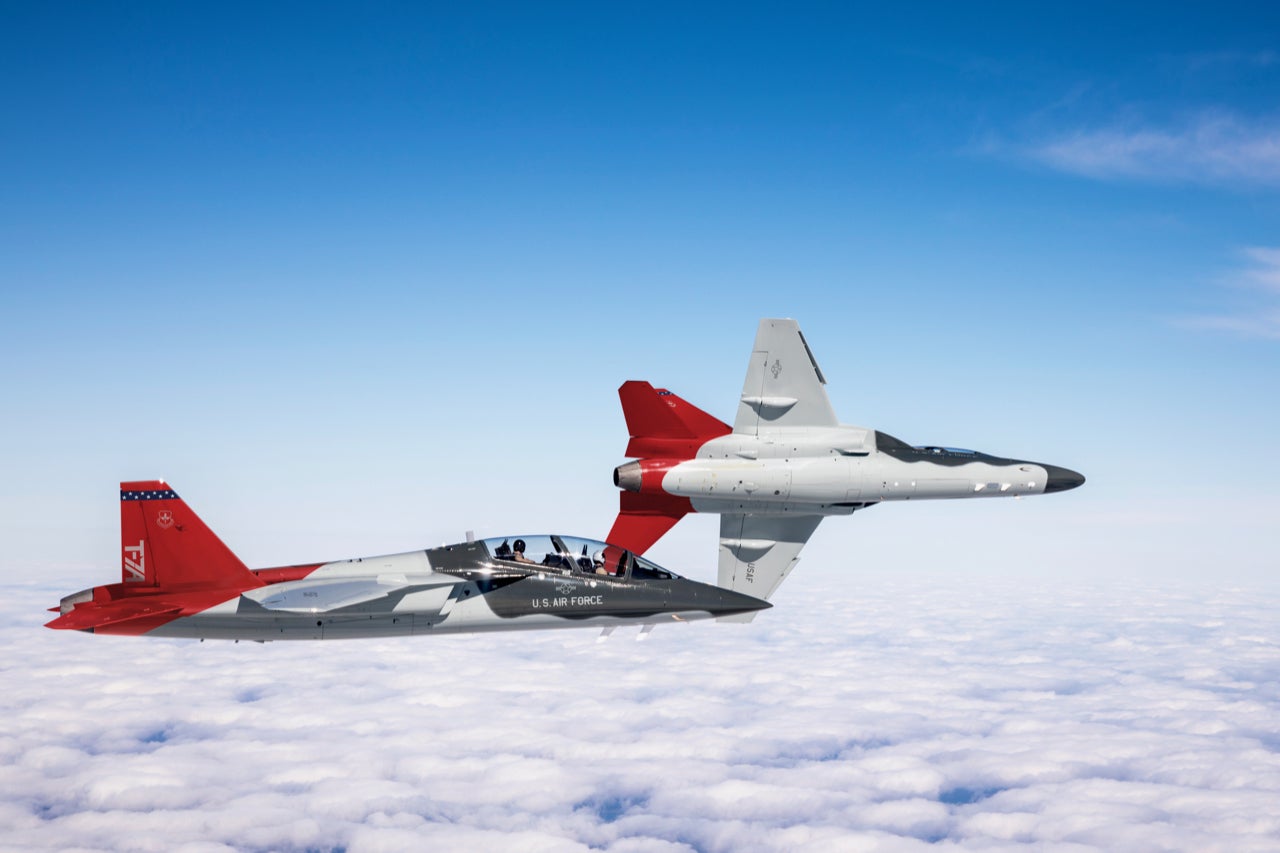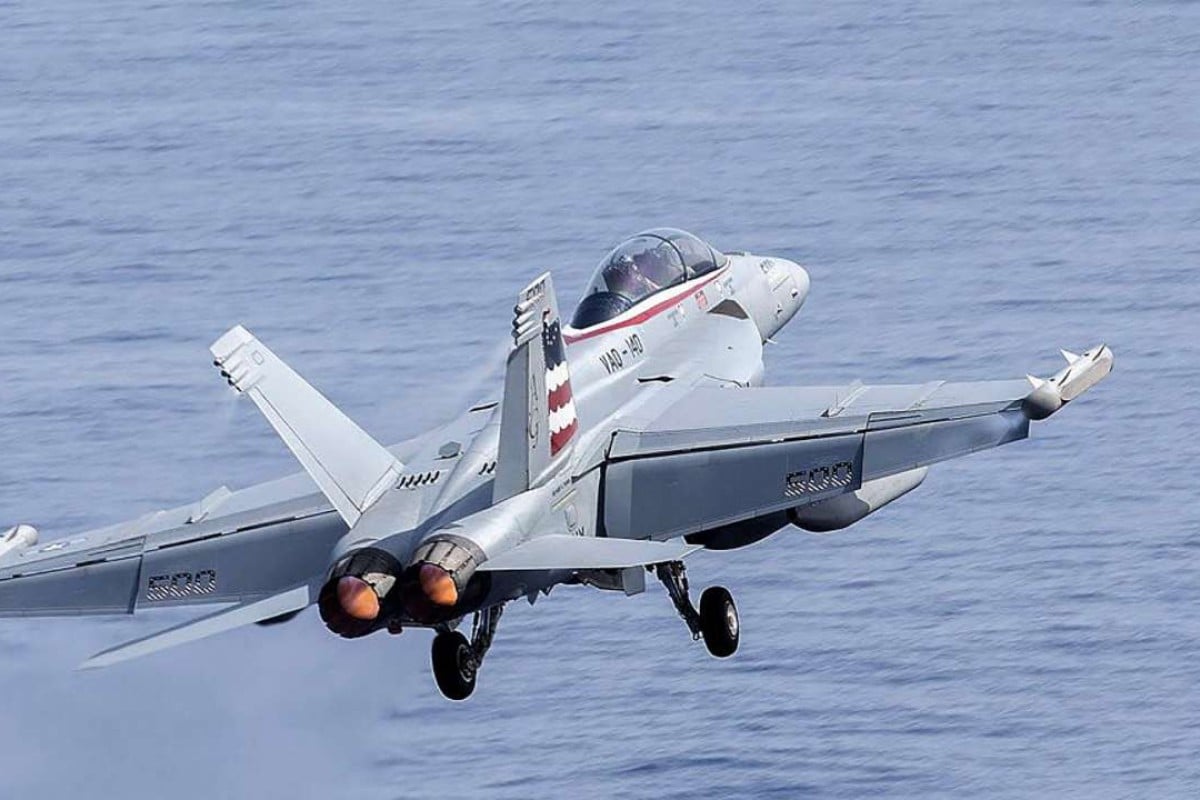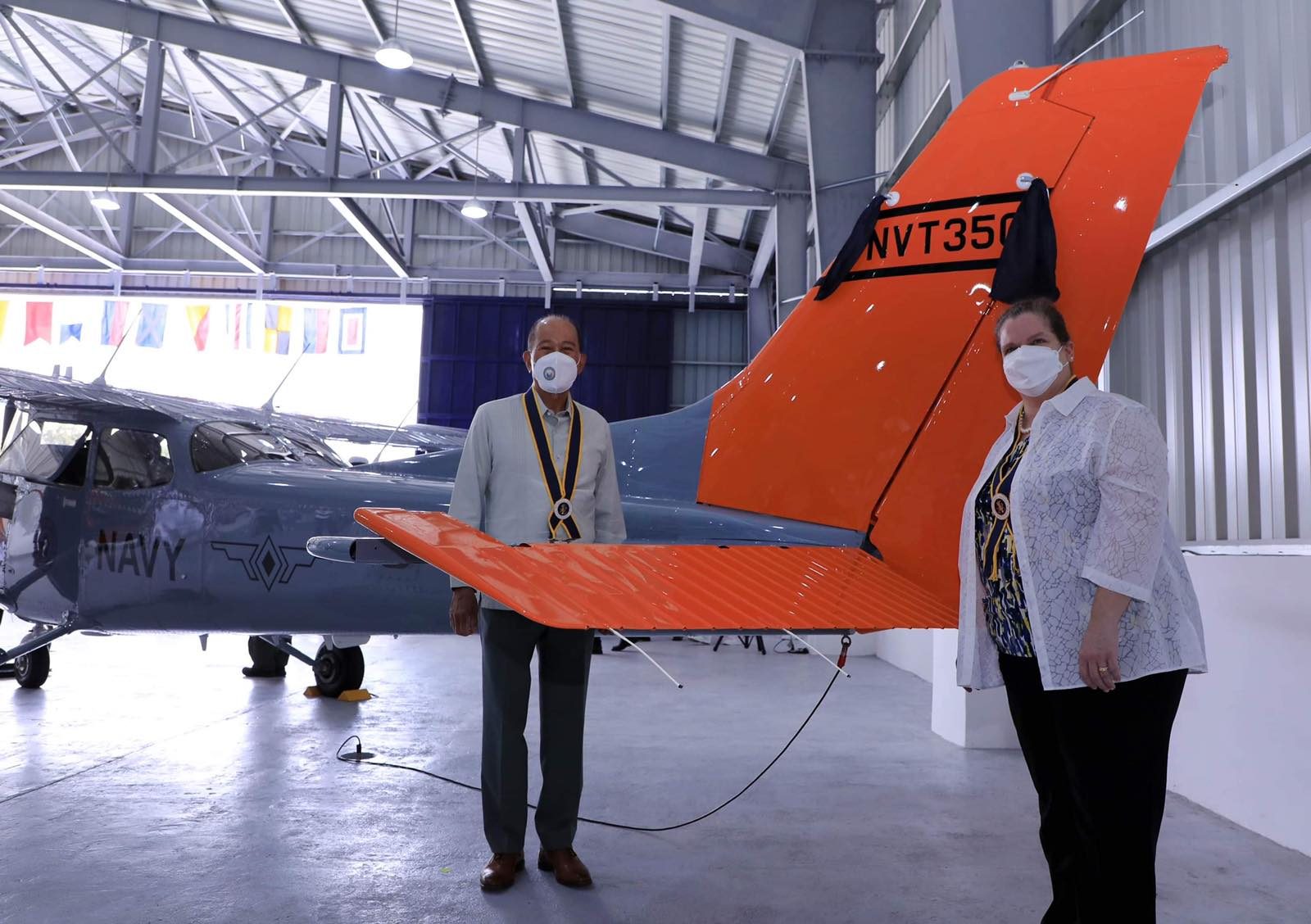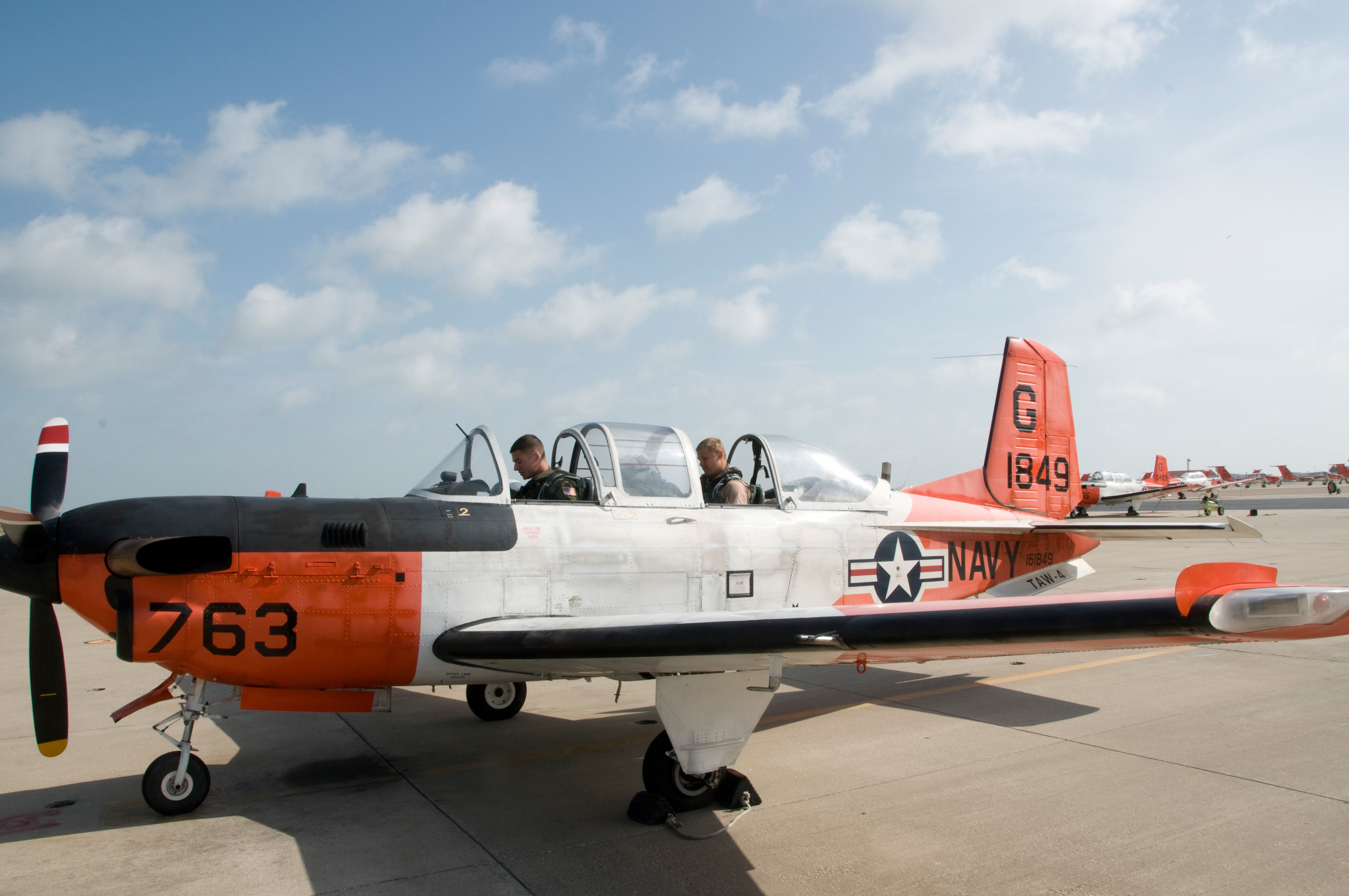U.s. Navy Training Aircraft - The North American T-2 Buckeye was an intermediate training aircraft designed to promote the United States Navy and the United States. The Navy supported naval aviators and supported naval aviation personnel for aircraft carriers.
Entering service in 1959, it entered service as a replacement for the Lockheed T2V SeaStar and was replaced in 2008 by the McDonnell Douglas T-45 Fighter.
U.s. Navy Training Aircraft

In 1956, the U.S. Navy requested a replacement for the T-28 piston-powered aircraft as its primary jet trainer. . North American Aviation won the US Navy's competition for a new trainer aircraft in mid-1956 with the NA-241 design.
North American T 6 Texan
The North American design, identified by the US Navy as the T2J-1, was a mid-wing monoplane with a student and instructor sitting in tandem on North American-built space seats for the instructor to look good. his head The aircraft's fixed wing structure was based on the FJ-1 Fury, and the control system was based on the T-28C.
Although unarmed, the T2J-1 can carry two 0.50-inch cannons, a 100-pound (45 kg) experimental bomb, or a 2.75-inch cruise missile.
The performance of the T-2 was between the US Air Force Cessna T-37 Tweeter and the US Navy TA-4J Skyhawk.
And type service with Basic Training Group Sev in 1959 as VT-7 at Meridian Naval Air Station. In 1961, another study group was formed in Meridian.
Us Navy T 34 Mentor Training Aircraft
The first version of the aircraft entered service in 1959 as the T2J-1. The T-2A was redesigned in 1962 under the Common Aircraft Designation System. The aircraft was later redesigned and replaced the two-thousand-pound (13,000 N) Pratt & Whitney J60-P-6 turbojet in the single-engine T-2B. The T-2C was equipped with two 2,950 lb (13,100 N) General Electric J85-GE-4 turbojets. The T-2D and T-2E were export variants for the Venezuelan Air Force and Hellenic Air Force, respectively. The T-2 Buckeye (along with the TF-9J Cougar) replaced the T2V-1/T-1A SeaStar, but the T-1 continued into the 1970s in some applications.
All T-2 Buckeyes were manufactured by North American at Air Force Base 85, located south of Port Columbus Airport in Columbus, Ohio. A total of 609 aircraft were built during the production period. The name Buckeye refers to the Ohio State Tree, as well as the Ohio State University mascot.
From the late 1950s to 2004, every qualified naval aviator and almost every Navy personnel trained in the T-2 Buckeye, which lasted four decades. The plane first took off from the Naval Air Station's shock tube (where it last saw traffic) in 2004.

And Naval Aviation Officer Tactical Aircraft Pipeline in 2008. U.S. Navy version by BAE Systems Hawk), compared to other high-performance, subsonic trainers or advanced U.S. Air Force Northrop T-38 Talon.
Bae Systems Hawk
Rather, it was used as an executive aircraft for T-2 aerial drones. Although several T-2 Buckeyes retain USN markings, they are now registered as FAA "N" civilian-owned aircraft; they regularly appear on air shows.
3,400 lb (1,542 kg) thrust Westinghouse J34-WE-46/48 turbojet-powered two-seat long-range trainer, original number T2J-1 Buckeye, 217
The upgraded version was powered by 3,000 lb (1,360 kg) Pratt & Whitney J60-P-6 turbojets; 97 were built.
The final production version for the US Navy was powered by two 2,950 lb-ft General Electric J85-GE-4 turbojets; 231 were built.
A U.s. Navy T 45c Goshawk Aircraft Assigned To Training Squadron (vt) 22 Launches From The Aircraft Carrier Uss Harry S. Truman (cvn 75) In The Atlantic Ocean Sept. 30, 2014. The Harry
SHIPPING FIRST Merchant Marine CAPT Dan Ouimette and VT-9's CO Paul Shankland escorted the captured carrier to the National Naval Aviation Museum at NAS Psacola as the last T-2C performed. An earlier version of the post showed the instructor and pilot "exiting" the T-34C Turbomentor that crashed in the Gulf of Mexico. The aircraft was not equipped with ejection seats and the term "ejected" was replaced by "saved".
A two-seat Navy training aircraft crashed early Thursday morning during a training flight in the Gulf of Mexico.
Beechcraft T-34C Turbomentor Trainer Turned At 10:20 a.m. CST in the Gulf of Mexico Naval Air Station Corpus Christi, Texas, Lt. as Bryn Olson told USNI.

An instructor and student assigned to Training Group 28 Rangers (VT-28) were safely rescued from the Turbomentor after spotting a P-3 Orion operated by Coast Guard units based in the Corpus Christi sector. United States Customs and Border Protection.
Us Navy Begins Search For Next Jet Trainer To Replace T 45 Goshawk
The Beechcraft Bonanza-based Turbomentor has been used by the Navy since the 1970s. The aircraft is currently being phased out of service in favor of the Beechcraft-built T-6B Texan II.
A previous Turbomentor crash in 2006 killed an instructor and a student at NAS Corpus Christi. NAS Whiting Field, Fla. He died in a separate T-34C crash in 2010. A T-45 from VT-7 aboard Harry S. Truman during carrier training. There may be a requirement to make restitution that has been arrested as an element of the protest. (Photo: US Navy)
The US Navy has published a request for information (RFI) on the government's Award Management System website for a new trainer aircraft following a 2018 marketing study. the new aircraft is intended to replace the majority of Boeing T-45 Goshawks currently in service for the intermediate and advanced elements of the Naval Aviator Training Program.
The main requirements in the RFI are that the aircraft must be of a 'non-developmental', i.e. existing type, and capable of performing Field Carrier Landing Practice (FCLP) events and Carrier Landing events. "Most importantly, it eliminates the need for the aircraft to be capable of full aeronautical operations such as catapult launch and arrest, marking a radical change in the Navy's approach to pilot training.
Two U.s. Navy Training Aircraft Collide In Mid Air In Texas
It is not yet clear whether a different type of aircraft was used for the final part of the carrier training, or whether advances in automated transport and flight technology might make such training unnecessary.
No timetable is included in the RFI, saying the Navy wants the new aircraft to enter service by the end of the decade. The T-45 fleet is undergoing a life extension program that will allow the Goshawk to remain in service into the 2040s.
UJTS calls for aircraft with a maximum speed greater than Mach 0.84 and a service ceiling of at least 41,000 feet. It should have a stable "unbuffered" load factor of more than 3.1 g and have two lower pylons for carrying training stores such as missile pods and bomb dispensers. The flight control system must have a precision landing function, and the mission system must be able to use radar and other sensors and air-to-air and air-to-surface weapons. Land-based candidates for the requirement are losing candidates such as the Boeing T-7A Red Hawk selected by the US Air Force, as well as the KAI T-50 and Leonardo M-346.

The Navy estimates that each aircraft will fly about 400 hours each year, with about 1,200 in FCLP and about 45 carrier touch-downs. Fataday life should be at least 14,400 hours and 43,200 cycles. The RFI also requests information on the ground training system.
Boeing Offers Up Its T 7a Trainer Jet To Replace Navy's T 45 Goshawk
The aircraft expected to replace the UJTS was a joint program between McDonnell Douglas (now Boeing) and British Aerospace (now BAE Systems) to meet the Navy's VTX-TS requirements. A heavily modified, carrier-capable Hawk entered service in 1991 as the T-45A Goshawk. Beginning in 1997, the T-45C with a "glass" cockpit entered service, and earlier aircraft were upgraded to this standard. Since the retirement of the Rockwell T-2C Buckeye in 2004, all Navy aviators have made their first "traps" and flown the T-45. The fleet was temporarily deployed in 2017 due to problems with the oxygen system. The North American Aviation T-28 Trojan is a radial-engined military trainer aircraft manufactured by North American Aviation and used by the United States Air Force and the United States Navy since the 1950s. In addition to being used as a trainer, the T-28 was successfully used primarily as a counter-attack aircraft during the Vietnam War. It remains in civilian use as an aerobatic and martial artist.
On September 24, 1949, the XT-28 (company designation NA-159) flew for the first time to replace the T-6 Texan. The T-28A arrived at Eglin Air Force Base, Florida in mid-June 1950 for convenience.
Us navy aircraft carrier classes, us navy carrier aircraft, us navy p3 orion aircraft, new us navy aircraft carrier, us navy aircraft carriers, us navy aircraft paint schemes, us navy aircraft pictures, us navy fighter aircraft, us navy training aircraft carrier, aircraft navy, us navy aircraft carriers list, us navy aircraft
0 Comments